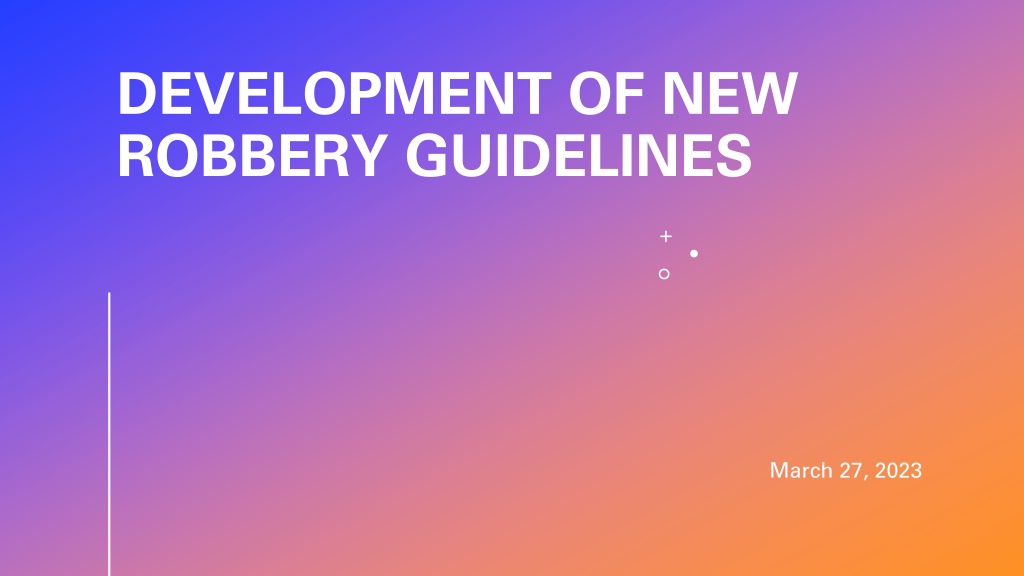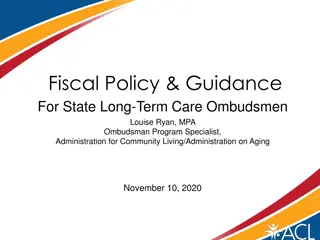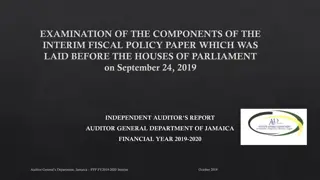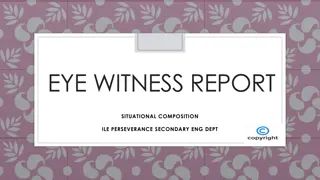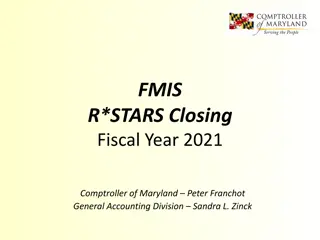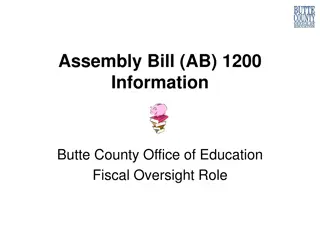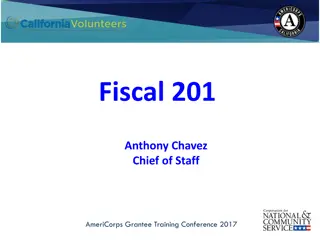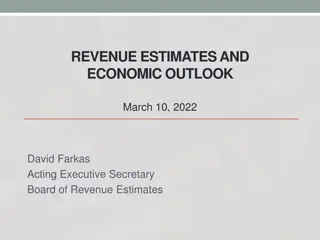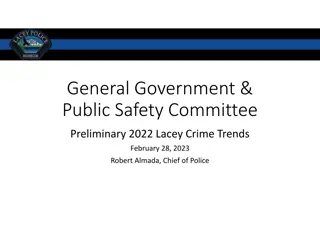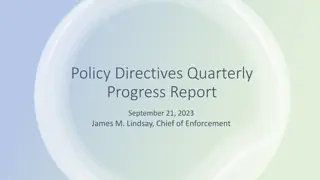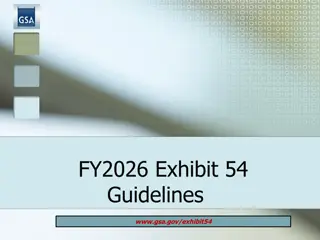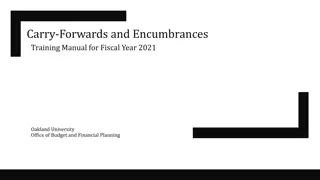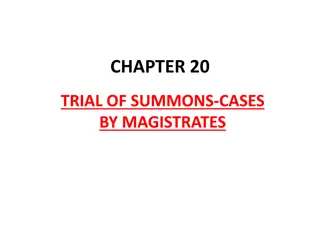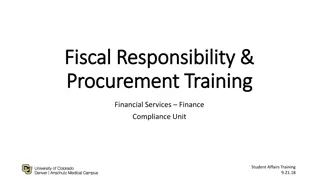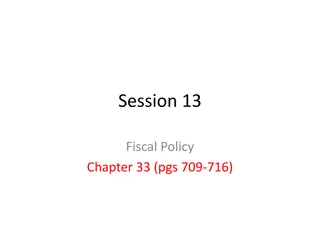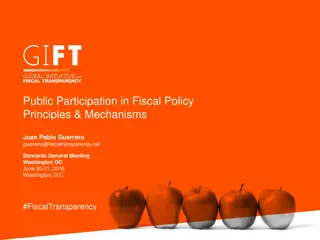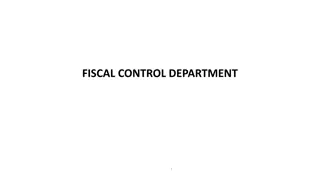Analysis of Robbery Guidelines and Cases in Fiscal Years 2021-2022
The content discusses the development of new robbery guidelines, penalties for different robbery scenarios, observations of fewer robbery cases under the new penalty structure, a comparison of cases in Court Case Management data versus guidelines, and details on robbery cases based on offense subgroups, weapon use, and weapon types in fiscal years 2021-2022.
Download Presentation

Please find below an Image/Link to download the presentation.
The content on the website is provided AS IS for your information and personal use only. It may not be sold, licensed, or shared on other websites without obtaining consent from the author. Download presentation by click this link. If you encounter any issues during the download, it is possible that the publisher has removed the file from their server.
E N D
Presentation Transcript
DEVELOPMENT OF NEW ROBBERY GUIDELINES March 27, 2023
18.2-58. Robbery; penalties A. For the purposes of this section, "serious bodily injury" means the same as that term is defined in 18.2-51.4. B. Any person who commits robbery is guilty of a felony and shall be punished as follows: 1. Any person who commits robbery and causes serious bodily injury to or the death of any other person is guilty of a Class 2 felony. 2. Any person who commits robbery by using or displaying a firearm, as defined in 18.2-308.2:2, in a threatening manner is guilty of a Class 3 felony. 2
18.2-58. Robbery; penalties 3. Any person who commits robbery by using physical force not resulting in serious bodily injury or by using or displaying a deadly weapon other than a firearm in a threatening manner is guilty of a Class 5 felony. 4. Any person who commits robbery by using threat or intimidation or any other means not involving a deadly weapon is guilty of a Class 6 felony. Code 1950, 18.1-91; 1960, c. 358; 1966, c. 361; 1975, cc. 14, 15, 605; 1978, c. 608; 2021, Special Session I, c. 534. 3
FY2022 ROBBERY CASES Two Issues Have Been Observed: Fewer Robbery Cases in Guidelines Than in Court Case Management (CMS) Data. Relatively Few Robbery Cases Under the New Penalty Structure (Offense Date On Or After 07/01/2021).
FY2021-FY2022 ROBBERY CASES CMS vs Guidelines Cases Fiscal Year 2021 2022 Total CMS Cases Guidelines Cases* Difference 329 387 716 285 270 555 44 117 161 * Robbery was the primary offense on the Sentencing Guidelines. Not included are sentencing events with robbery as the additional offense and not the primary because of scoring errors.
FY2022 ROBBERY CASES Offense Subgroups Subgroup Non-Guidelines* Offense Before 07/01/2021 Offense On/After 07/01/2021 Carjacking* Total Frequency Percent 2 0.7 77.4 11.2 10.7 100.0 209 30 29 270 *Excluded from Case Details Worksheet Analyses
FY2022 ROBBERY CASES Weapon Use Used to Threaten 98 Cases (41.0%) Used to Injure 37 Cases (15.5%) Possessed Weapon 24 Cases (10.0%) None Used 24 Cases (10.0%)
FY2022 ROBBERY CASES Weapon Type Firearm 104 Cases (43.5%) Knife 18 Cases (7.5%) Other* 11 Cases (4.6%) Simulated Weapon 9 Cases (3.8%) Note/Verbal 5 Cases (2.1%) Blunt Object 1 Case (0.4%) Explosive, Vehicle, Etc. No Cases * Includes Pepper Spray/Mace, Stun Gun, Crowbar, Cords, Lumber, Etc.
FY2022 ROBBERY CASES Offender s Role Acted Alone 81 Cases (33.9%) Not Determined 34 Cases (14.2%) Accomplice 32 Cases (13.4%) Leader 30 Cases (12.6%)
FY2022 ROBBERY CASES Location of Robbery Business 73 Cases (30.5%) Street/Outside 63 Cases (26.4%) Residence 37 Cases (15.5%) Automobile 14 Cases (5.9%) Other 3 Cases (1.3%) Bank 2 Cases (0.8%)
FY2022 ROBBERY CASES Injury to Victim Threatened 91 Cases (38.1%) Physical 46 Cases (19.2%) Emotional 27 Cases (11.3%) None 20 Cases (8.4%) Serious Physical 11 Cases (4.6%) Death 6 Cases (2.5%) Life Threatening 2 Cases (0.8%)
FY2022 ROBBERY CASES Victim Relationship to Offender None/Stranger 122 Cases (51.0%) Known 30 Cases (12.6%) Other 12 Cases (5.0%) Friend 9 Cases (3.8%) Family 3 Cases (1.3%)
FY2022 ROBBERY CASES Victim Age Frequency Distribution Age (Years) 15-19 20-29 30-39 40-49 50-59 60+ Total Frequency Percent Cum. Percent 11 17 8 6 5 7 54 20.4 31.5 14.8 11.1 9.2 13.0 100.0 20.4 51.9 66.7 77.8 87.0 100.0 Only 54 Cases (22.6%) with Valid Victim Age Median Age of Victim is 27 Years
DESK AUDIT Requesting VCSC Approval
Desk Audit Reasons for an Audit Determine if and why Sentencing Guidelines are missing. Capture missing information from the Case Details Worksheets. Move the development of Robbery Guidelines forward. Audit Requirements Access to court records through OCRA Limited field visits when electronic access is denied or not available Continue to monitor FY2023 for missing Robbery Guidelines Approval of the Commission to conduct a continuous audit
